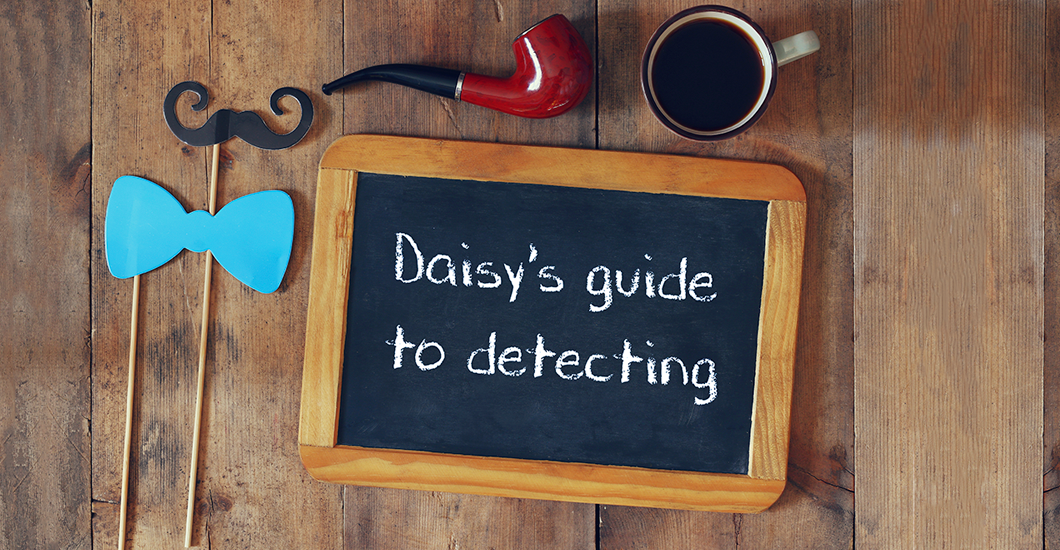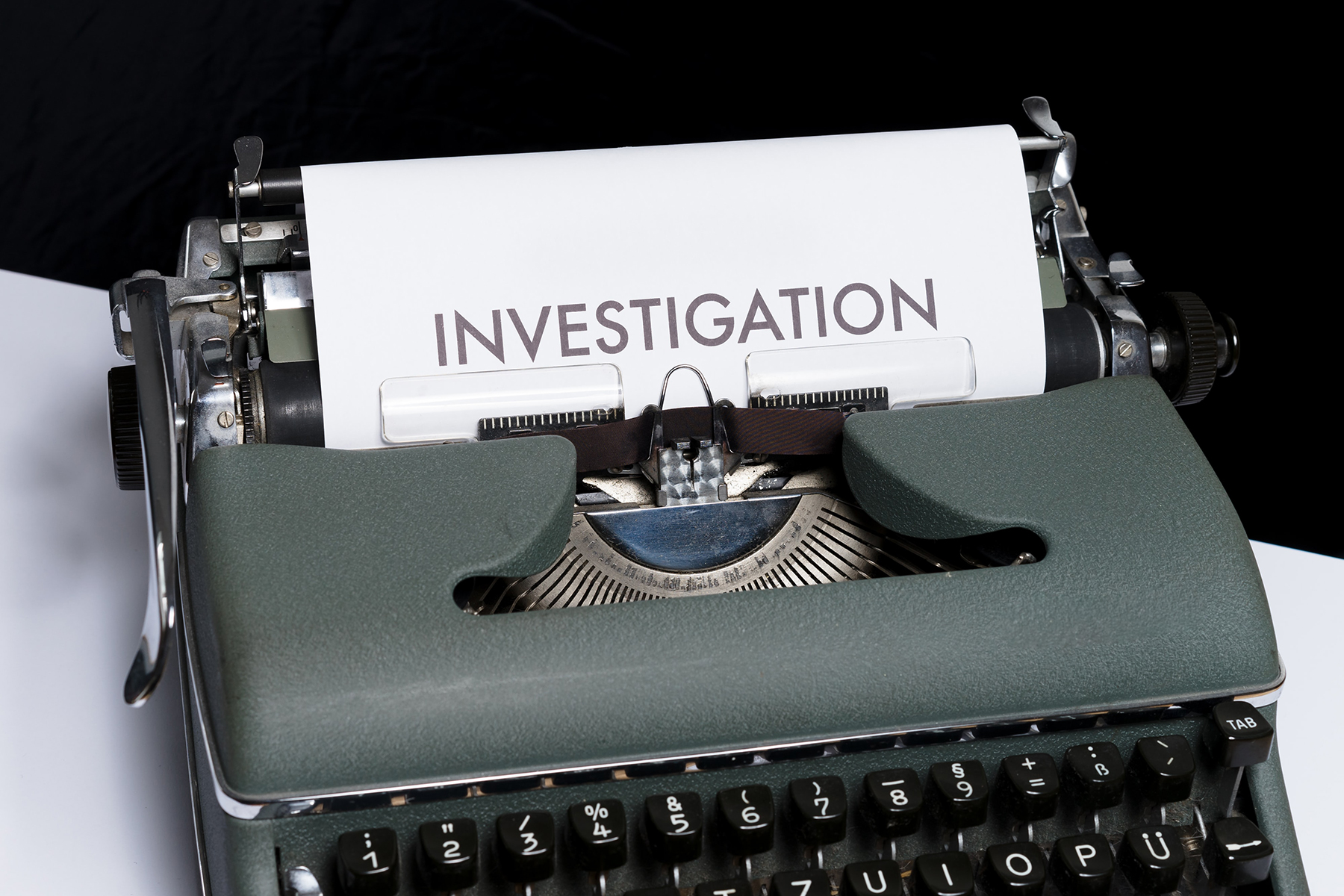- Home |
- Search Results |
- A Murder Most Unladylike guide to detecting
A Murder Most Unladylike guide to detecting
Are you a budding super-sleuth? Well then, you're in luck, young detective. The Honourable Daisy Wells, President of the Wells & Wong Detective Society, has written a fantastic (if we must say so) guide to detecting, which will help you get ready to solve your first case...

Hullo, it’s Daisy again! For this companion, Hazel has suggested I write another guide – a particularly special one. In the next few pages, I shall explain to you how you can become a detective almost as good as me.
Picture the scene: a body has been discovered; an item has been stolen; a suspicious letter has been found. It is up to you to solve the case. But where should you begin?
First, establish the facts
In every mystery, the detective must discover the answers to five questions: who, what, where, when, and how. Once they are solved, the case simply falls into place!
Let me give you an example. On Tuesday of last week, an entire cream bun went missing from my plate during tea. As soon as its loss was discovered my brain began to work. I was the victim, but also the detective. What else did I know, and what did I need to find out?
Who? (who did it?)
Unknown. This is what I wanted to discover! It must have been a member of our boarding house, as I did not see anyone unknown enter the room during the meal.
What? (what happened?)
This was easier. The unknown culprit had stolen my bun, presumably because they wanted to eat it themselves.
Where? (where was the scene of the crime?)
The House Dining Room, on the fourth formers' table. This narrowed down the suspect list considerably. The culprit could only have been someone with a reason to be at the table at the time of the theft – so either a fourth former or the prefect on duty at the table.
When? (when did the crime take place, and what else was happening?)
Last Tuesday afternoon, just after a rather punishing Games lesson. It was a beastly crime because I was particularly hungry. I also recalled that a minute before the bun went missing, the conversation had become very heated. The other fourth-form dorm had lost our hockey game, and Sophie Croke-Finchley had been loudly upset about it. We had all turned to look at her – and when I turned back, my bun was gone.
How? (how could the thief have carried out the crime?)
My answer to when helped me work out how. Sophie had distracted me, and knowing the rivalry between our dorms, I suspected that she had done so on purpose. But who might she have been working with? The twins, Rose and Jose Pritchett, usually work together, so it was unlikely to be them. But there is one more member of the dorm who is friends with Sophie, who dislikes me, and who might have tried to get one over on me (forgetting, of course, that no one tricks the Honourable Daisy Wells for long)...
As you will see, there was only one possible culprit: Clementine Delacroix, Sophie’s dorm mate, and our dorm’s sworn enemy. I forced her to stand up and turn out her pockets – and the bun was revealed, wrapped in Clementine’s handkerchief. Clementine gave it back to me at once, and that evening I had my revenge – I crept into the other dorm while Clementine and her associates were at toothbrushes and gave Clementine an apple-pie bed. This is an excellent prank, and I advise you all to learn it. You never know when it may come in useful.

Creating a suspect list
The mystery of the stolen cream bun was so easy that a suspect list was not needed. But most cases are more difficult, and in that case, a suspect list is simply crucial.
Begin by thinking of everyone who may have had the opportunity to commit the crime. Even the most unlikely people can be suspects! Make your secretary write them all down in order, and for each suspect note down the following information:
Motive
Can you think of a reason why this suspect may have wanted to commit the crime? If you are investigating a murder, it may be a question of revenge or hatred. Perhaps there is a great sum of money involved or jewels. Or could the victim have known a dangerous secret that the suspect was desperate to cover up?
Alibi
This is a Latin word that means elsewhere (now you can tell your friends that and feel particularly clever). An alibi is proof that a suspect could not have been committing the crime because they were somewhere else when it took place. For example, imagine there was a murder in a park at three o’clock on a Thursday afternoon. If one of your suspects was in a shop buying a new hat at that time, and the shopkeeper can corroborate their story (a detective word that means agree) with a receipt or similar physical proof, then they have an alibi and can be ruled out. But beware of tricks and deception! Sometimes a criminal will make up a false alibi to put a detective off the scent.
Notes
These are any details that you know about a suspect that may help either eliminate or convict them. Make sure anything you write down is precise and thorough – if you put something false or vague down it may confuse both you and your case!

Investigating the scene of the crime
This is always important – and particularly vital if you are investigating a theft or a murder.
Note that you’ll need a stiff upper lip if it’s a murder you’re dealing with – bodies and blood should be no barrier to truth and justice, but in practice, they are rather upsetting, especially to Hazel. However, you must simply swallow your fear and start hunting for clues.
Does anything seem out of place? Has anything been moved, documents rifled through or books searched? Could something be missing from the room, and if so has it left behind traces? Look for rings of dust where ornaments have sat or faded places on a wall where pictures were hung.
And if nothing is missing, has anything been left behind by the culprit? This might be an item of clothing, a cigarette butt, or even – if you’re very lucky - the murder weapon. Or perhaps something subtler – a strand of hair, a spot of blood, fingerprints, or footprints. More on prints later, as they’re utterly invaluable.
Top tip
Keep a paper bag on your person at all times, for storing any clues that you might find. Make sure you wear gloves or wrap your sleeve around your hand so that you do not leave prints on evidence!
There you have it, you're now ready to tackle your first case! Good luck, Detective. Remember, you can read the full guide in Cream Buns and Crime, which is packed full of detective tips, puzzles, and fantastic mini-mysteries. And don't forget to read the rest of the series for more exciting adventures!